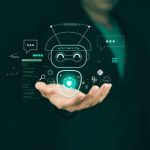In the ever-evolving landscape of technology, artificial intelligence (AI) continues to redefine boundaries and reshape industries. One of the most intriguing advancements in recent years is the evolution of AI-powered content creation, where data transforms into voice, offering a new dimension to how we create and consume information. This transformation is not just a technological marvel but also a cultural shift that influences everything from media production to personal communication.
At its core, AI-powered content creation involves using sophisticated algorithms and machine learning techniques to generate text, audio, or video content. The process begins with vast amounts of data being fed into AI content generation models. These models learn patterns, styles, and nuances from this data to produce coherent and contextually relevant outputs. Initially focused on automating mundane tasks like generating reports or summarizing articles, AI’s capabilities have rapidly expanded. Today’s advanced systems can craft entire articles, compose music scores, create visual art pieces, or even simulate human-like conversations.
One significant breakthrough in this domain is natural language processing (NLP), which enables machines to understand and generate human language with remarkable accuracy. NLP has empowered virtual assistants like Siri and Alexa to become more intuitive conversational partners. Furthermore, platforms such as OpenAI’s GPT-3 have demonstrated an ability to produce text indistinguishable from that written by humans in many cases. This leap forward offers immense potential for businesses seeking efficient ways to engage audiences through personalized marketing materials or customer service interactions.
The implications extend beyond business applications; they touch upon education too.











